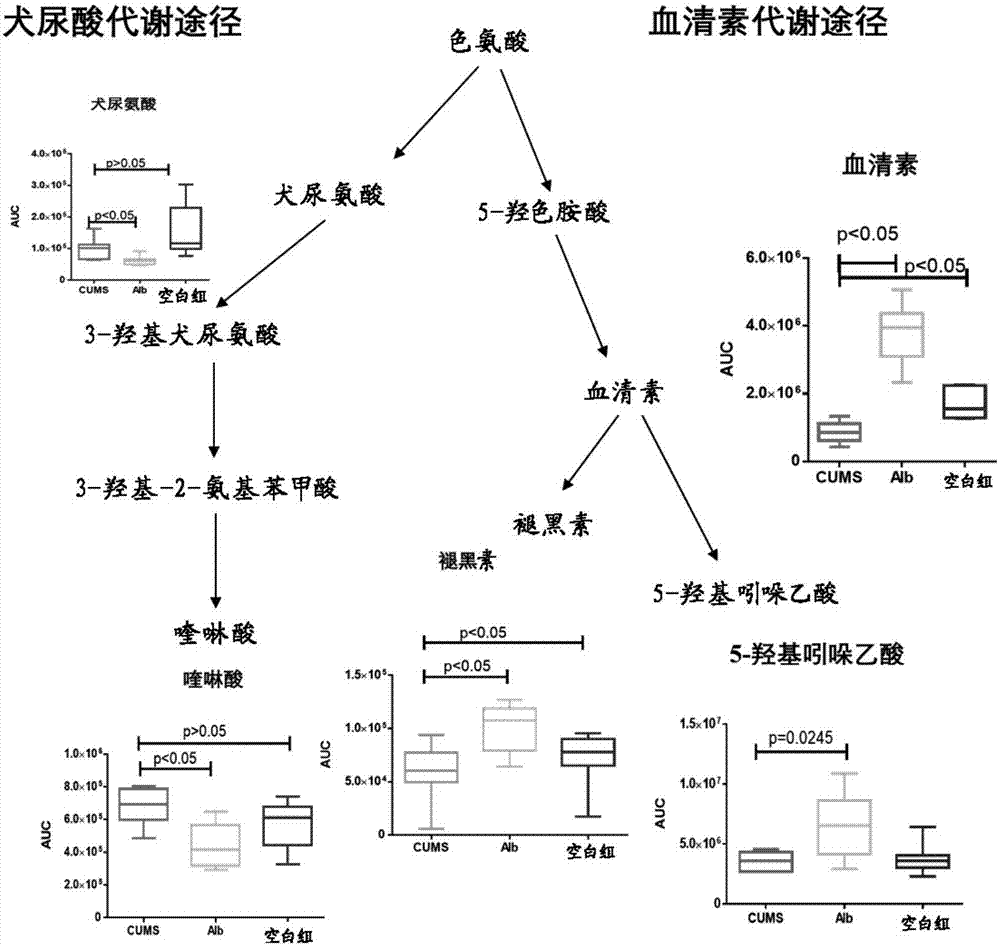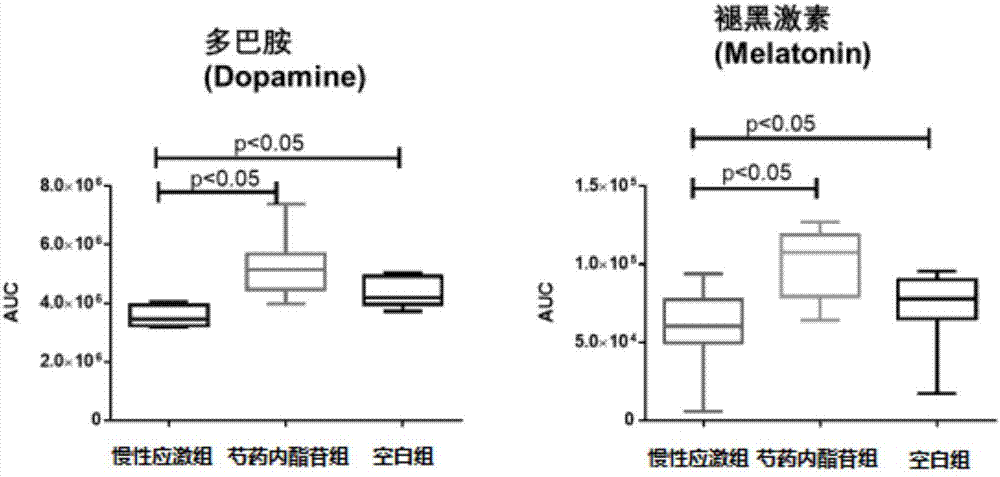Application of albiflorin to preparation of melatonin system function improving products
A paeonifloride glycoside and system function technology, applied in the field of medicine, can solve the problems that melatonin cannot achieve the expected effect, reduce the secretion of endogenous melatonin, and damage the system function, so as to promote endogenous melatonin hormone secretion, improve melatonin system function, increase the effect of activity and content
- Summary
- Abstract
- Description
- Claims
- Application Information
AI Technical Summary
Problems solved by technology
Method used
Image
Examples
Embodiment example 1
[0049] Implementation Case 1: Effect of Paeonifloride on the Function of Melatonin System in CUMS Rats
[0050] In our research on the mechanism of action of paeonifloride on anti-stress, anti-depression, improving sleep and cognitive function by using a new generation of targeted metabolomics technology, we found that the chronic unpredictable mild stress model (chronic unpredictable mild stress, CUMS ) Rat hippocampal serotonin, melatonin, melatonin receptors, dopamine secretion are inhibited, paeonifloride administration (7mg / kg) 7 days later:
[0051] 1.1 The content of kynuric acid and quinolinic acid in the hippocampus of chronic stress rats was significantly reduced, indicating that the metabolic pathway of kynuric acid was down-regulated, while the content of serotonin and melatonin in the hippocampus was significantly increased, indicating that the metabolic pathway of serotonin and melatonin raised, see attached figure 1 .
[0052] 1.2 Paeonifloride can significa...
Embodiment example 2
[0063] Implementation Case 2: Effect of Paeonifloride on Learning and Memory Function of CUMS Rats
[0064] 2.1 The effect of paeonifloride glycosides on the opening activity of rats with chronic stress
[0065] After 21 days of chronic stress, rats were successfully modeled, and paeonifloride (7mg / kg) was administered orally for 7 days to conduct an open-field activity experiment. The number of times was significantly reduced, and compared with the blank control group, there was a significant difference (P<0.01), see Table 3. After 7 days of administration, there were significant differences between the fluoxetine group, the paeonifloride group and the model group (P<0.05 or P<0.01), suggesting that paeonifloride had a significant effect on the learning and memory impairment of the tested rats. Improvement effect.
[0066] Table 3 Rat opening behavior comparison (mean ± s, n = 8)
[0067]
[0068] ##P<0.01 compared with the control group; **P<0.01 compared with the mode...
Embodiment example 3
[0074] Implementation Case 3: Effect of Paeonifloride on Learning and Memory Function of Scopolamine Dementia Mice
[0075] After the mice were intraperitoneally injected with scopolamine hydrobromide to prepare the learning and memory impairment dementia model, the water maze test was performed, and the swimming time (ie escape latency) and swimming distance of the mice after entering the water to find the platform were used as observation indicators. The experimental results showed that: compared with the model group, the escape latency of the paeonifloride group on the 4th and 5th day was significantly shortened (P<0.05), see Table 5; The daily swimming distance was shortened (P<0.05), see Table 6. The results of this experiment show that paeonifloride can significantly improve the learning and memory ability of scopolamine-induced dementia model mice.
[0076] Table 5 The effect of paeonifloride glycosides on the escape latency of scopolamine-induced dementia model mice (...
PUM
 Login to View More
Login to View More Abstract
Description
Claims
Application Information
 Login to View More
Login to View More - R&D
- Intellectual Property
- Life Sciences
- Materials
- Tech Scout
- Unparalleled Data Quality
- Higher Quality Content
- 60% Fewer Hallucinations
Browse by: Latest US Patents, China's latest patents, Technical Efficacy Thesaurus, Application Domain, Technology Topic, Popular Technical Reports.
© 2025 PatSnap. All rights reserved.Legal|Privacy policy|Modern Slavery Act Transparency Statement|Sitemap|About US| Contact US: help@patsnap.com



